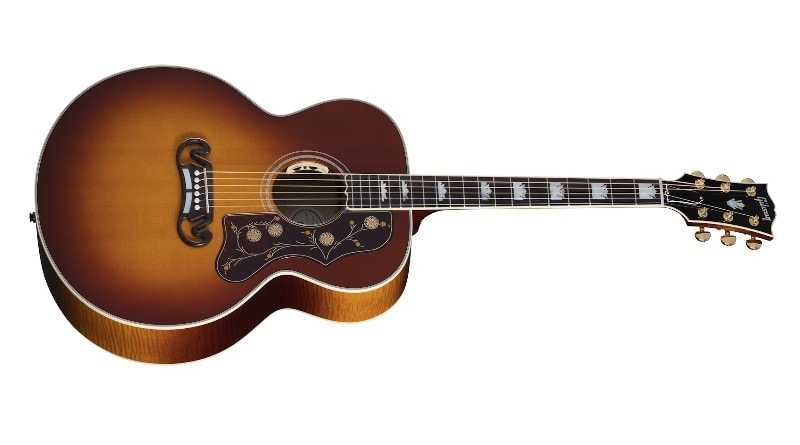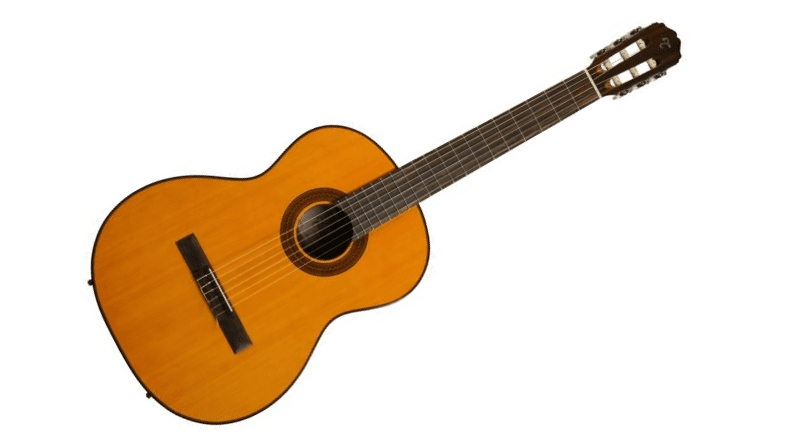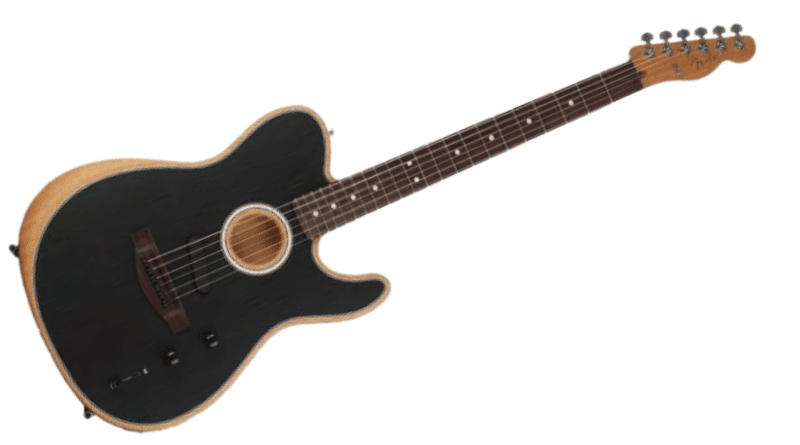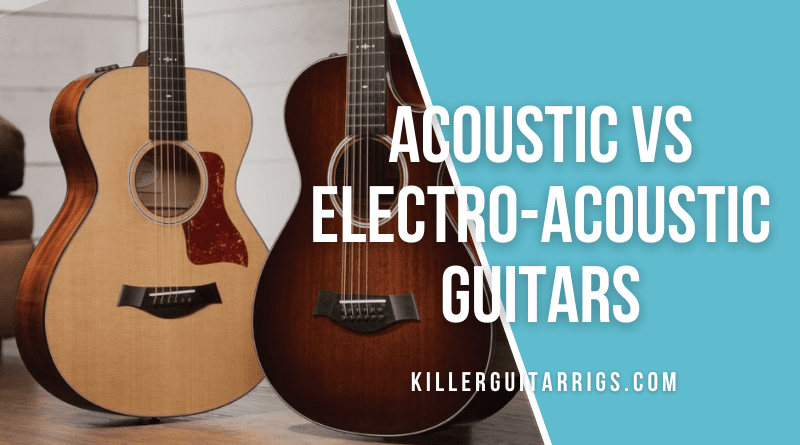The main difference between an acoustic and an electro-acoustic guitar is that the latter has pickups installed in them so that the sound can be amplified through an amplifier or a speaker.
From Robert Johnson’s ‘Cross Road Blues’ released in 1936 to Ed Sheeran’s solo performance of ‘Shape Of You’ at the Glastonbury Festival in 2017, the acoustic guitar has withstood the test of time. Many decades have passed since the invention of the guitar, and many genres have come and gone. But the power of the acoustic guitar remains unparalleled to this day.
With rapid advancements in technology, the humble guitar too has undergone many transformations. We now have ‘electro-acoustic’ guitars that solve all our volume-related woes.
But is an electro-acoustic better than an acoustic guitar? Is it any different in the first place? If you have been wondering what an electro-acoustic is and debating whether to get one, then read our breakdown to settle the debate!
Contents
What Is An Acoustic Guitar?

A guitar with a hollow body that does not require external amplification to produce sound is known as an acoustic guitar.
Acoustic guitars can have either steel or nylon strings. We will explore the different kinds of acoustic guitars in the next section:
Types Of Acoustic Guitars
Even though acoustic guitars primarily have steel or nylon strings, they can be of many different sizes and shapes and are made of different kinds of wood.
Steel String:
- Parlor
- Orchestra
- Grand Orchestra
- Auditorium
- Grand Auditorium
- Dreadnought
- Jumbo
Sitka Spruce, Mahogany, Rosewood, Maple, and Cedar are some of the most common woods used to make acoustic guitars. The different types of guitars listed above may have a standard scale length of 25.5 inches but the size of the body varies. While a Parlor has a smaller body, the Jumbo has the largest one. This also results in a difference in the sound produced by them. Some may have a warm tone while others may sound bright.
Depending on the model of the acoustic, it may also have a cutaway to help you reach higher frets. To know more about the anatomy of a guitar, you can read our guide here.
Nylon String

These guitars are generally used for classical music since it is easy to play fingerpicking style on them. Some of the most prominent ones are:
- Classical
- Flamenco
- Hybrid
Nylon string guitars have a higher string tension. If you have ever wondered if you can restring your steel guitar with nylon strings or vice-versa, you can read our article on it here.
Advantages Of An Acoustic Guitar
- They are great for beginners. They come at every price point so you don’t have to worry about breaking the bank when you decide to buy one. Here is our list of the best acoustic guitars for beginners.
- They are portable and can be carried anywhere. Since they don’t need an amplifier, you can even travel with them. Some brands such as Yamaha, Martin, Taylor, etc make travel guitars that are smaller in size but pack the same punch in terms of sound.
- If you play fingerstyle or percussive guitar then these are ideal because of their high resonance.
Disadvantages Of An Acoustic Guitar
- There is a limit to the volume of acoustic guitars. While the instrument is great for an intimate setting or practice, an acoustic guitar will be inaudible when playing in a larger venue or even with other loud instruments such as drums.
- They are not versatile. You can’t plug any effect pedals into an acoustic guitar. Thus you will not be able to make adjustments to your tone when playing acoustic guitar.
- Although you can use an external microphone to amplify your guitar’s sound, it may not ideal because of feedback and loss issues.
What Is An Electro-Acoustic Guitar?

An electro-acoustic (also known as an acoustic-electric) guitar is simply an acoustic guitar with pickups fitted into it to amplify the sound. The pickups can be magnetic, a microphone, or a piezoelectric.
These are different from hollow-body (semi-electric) guitars which are a hybrid of electric and acoustic guitars.
History Of The Electro-Acoustic
In the Big Band era of the 1920s, the acoustic guitar became a solo instrument. However, since they could not be amplified at the time, they were inaudible against large brass and percussion sections.
Vivi-Tone’s Llyod Loar was the first person to successfully fit an electric pickup into an acoustic guitar. The earliest pickup was mounted on a removable drawer that slid out from the bass rim. The signal was transferred to a metal plate from the wooden bridge and this allowed the amplification of sound from the electrical output.
FHC pickups made by Harry DeArmond were the first commercially available pickups. These were successful because one did not need to make modifications to their guitar to install them.
Gibson released the first electro-acoustics, the J-160E and CF-100E, in 1954. These days, all major guitar manufacturing companies produce their version of the electro-acoustic flattop guitar.
Different Types Of Pickups
- Microphone: A small microphone is fixed inside the body of the guitar, and this picks up the sound and amplifies it. Although these sound like the natural tone of the guitar, they can often have high feedback, and you need to be careful about where you place them. Brands such as Fishman and LR Baggs manufacture these internal microphone pickups.
- Magnetic: Just like a single-coil electric guitar pickup, these are wound in copper wire and fitted into the soundhole. While these don’t work on nylon string guitars, they sound warm. But just like an electric guitar, these don’t pick up the natural resonance of the guitar like a microphone pickup.
- Piezo: These transducers are fitted in between the bridge and the bridge saddle. They have a bright sound that may or may not be ideal for everyone.
Advantages
- Since these guitars come with pickups installed, you do not need to modify your instrument to fit one in. The sound of the guitar often changes when pickups are fitted onto the wood of the body.
- Unlike electric guitars that make no sound when unplugged, you can still hear yourself when you play these guitars without an amp or a speaker.
- If you play in a band or with other musicians, you will be able to hear yourself in a loud setting.
Disadvantages
- These can often be expensive because they include the cost of the pickup and sometimes even a built-in tuner. So unless you are looking to play gigs, they aren’t worth their price
- While you can amplify the sound, they still sound like an acoustic guitar. Thus, they are not as versatile as electric guitars.
- Since these guitars have electronics, they require additional care and maintenance.
Similarities and Differences Between The Two
- The anatomy is the same in both types of guitar. So if you can play one, you will have no problem with the other.
- While you can amplify the sound of an electro-acoustic, you cannot do so with an acoustic one.
Factors To Consider Before Buying One
Playability and Comfort
The first criteria should always be how comfortable you are playing the instrument and if you can navigate the fretboard with ease. Since some guitars have a larger body than others, one often finds it difficult to hold them while playing.
So no matter which one you choose, make sure it is the right fit for you. If you are undecided about a Dreadnought or Concert style guitar, then you can read more about the differences between them here.
Genre and Style
Remember that both are made out of wood and thus resonance is a key factor in the sound. While electro-acoustics have pickups, they will be unable to pick up the intricacies in your sound if you play fingerstyle or percussive guitar.
On the other hand, if you are looking for a guitar to strum that will be heard when other instruments are playing then an electro-acoustic is the way to go.
Price
Although both types of guitars are available at different price points, the reason why electro-acoustic guitars cost more is because of the electronics fitted into them. So if you want a guitar that you can play by yourself and aren’t looking to play music professionally, then an acoustic guitar makes for a better investment.
On the other hand, even if you are a beginner and someday want to play gigs then buy an electro-acoustic guitar because you will want to use the pickups eventually when you play for others.
No matter what your decision, remember that along with a guitar you will also need to purchase certain accessories. So leave some room in your budget for those as well.
Shape and Appearance
Some people find it more comfortable to play a ¾ sized guitar than a standard-sized one. There are many available options for them if you want to buy an acoustic guitar. However, the smaller the guitar, the less projection it has. So if you buy a Junior or even a Parlor guitar, you have to compromise on its projection.
On the other hand, electro-acoustic guitars do not have this problem since you can always plug them into an amp if you require more projection.
Both guitars look the same physically so ultimately it comes down to the other factors.
Which One Is Better?
All guitar players have their preferences so there isn’t one right answer to this question. If you are a beginner and want to learn how to play guitar as a new hobby, then invest in an acoustic guitar. You don’t have to worry about amplifying the sound if you plan to play it for your friends and family.
If you do see yourself playing for an audience or in a band then buy an electro-acoustic because you will need a guitar that has a good projection of the sound. So it’s better to buy a guitar that has pickups than to get one and then try to modify it. As explained earlier, making modifications to an acoustic guitar can drastically alter its sound.
Frequently Asked Questions
- Can I amplify the sound of an acoustic guitar?
Yes. You can amplify the sound of an acoustic guitar by using a microphone – we have a whole article on the best microphones for recording acoustic guitars. When you do this, make sure that the microphone is placed in such a way that there is no feedback.
- Can I hear an electro-acoustic guitar without an amp?
Yes. When it isn’t plugged into an amp, an electro-acoustic sounds like an acoustic. However, you may notice that it sounds different when plugged into an amp.
- How does a cutaway affect the sound of a guitar?
Cutaways give us better access to higher/upper frets. Due to the shape and less amount of wood used to make the body, they have a lower resonance. However, the difference is not very major for a beginner to notice. If you are a rhythm guitar player, you don’t need a guitar with a cutaway. But if you enjoy playing solos, then cutaways definitely help.
- Is an electro-acoustic guitar suitable for beginners?
As long as one can hold the guitar comfortably and navigate the fretboard with ease, it is for beginners as much as it is for professional guitar players.
- How does size affect the sound of a guitar?
While electric guitars are not affected by the size of their body, the sound of an acoustic guitar is dependent on it. A guitar with a smaller body has lower resonance. This means that the projection is also low. While a smaller body may have a warmer and deeper sound, a guitar with a larger body will give you a brighter sound with a louder volume.
Final Thoughts
One way to know for sure which type of guitar is suitable for you is to make a list of all the artists you enjoy listening to or want to sound like and then look up what kind of gear they use.
You will find that many musicians compose their music on an acoustic guitar in an intimate setting. These guitars seldom leave their studio/home. When they perform, they use an electro-acoustic.
Ultimately, the choice is yours and yours alone. Whichever one you pick is the right one for you.


